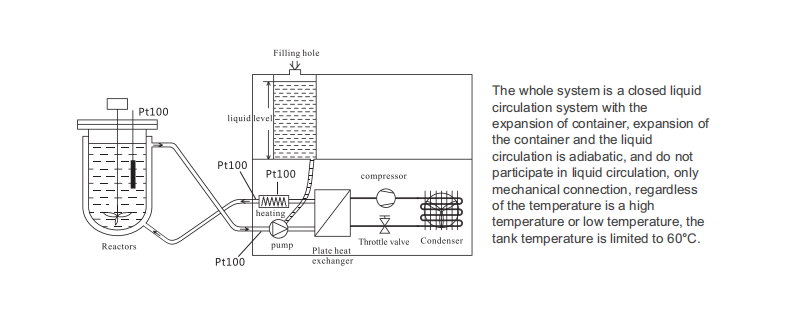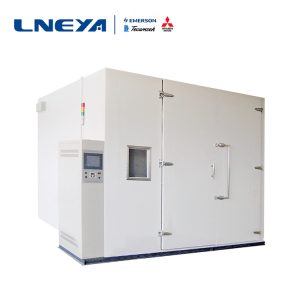Existence of vacuum furnace cooling system of LNEYA cooling heating system
High-temperature vacuum furnace refers to an industrial furnace heated by electric heating elements in a state close to a vacuum. High-temperature vacuum furnace is generally composed of furnace, electric heating device, vacuum system, sealed furnace shell, power supply system and temperature control system. Vacuum furnace cooling temperature control system is an important part of vacuum furnace. The cooling water path should be kept clear, otherwise the water temperature rise will constitute a shutdown, which is a problem often ignored in vacuum furnace operation.
Temperature control, heating process and the atmosphere inside the furnace will directly affect the product quality of the resistance furnace after production. Increasing the temperature of the metal can reduce the melting resistance, but too high temperature will Causes the grains to oxidize or overfire, which seriously affects the product quality in the vacuum furnace. If the steel is heated to a certain point above the critical temperature during the heat treatment, and then suddenly cooled by the cooling method, the hardness and strength can be improved. Slow cooling at a point below the temperature makes the steel more ductile.
In order to prevent the furnace shell from deforming after being heated and the sealing material from being deteriorated by heating, the furnace shell is generally cooled with water or air. However, it is not appropriate to use nitrogen as a cooling gas when heat treating titanium alloys in a vacuum furnace, because titanium and nitrogen react at high temperatures to form golden yellow titanium nitride, which affects the performance of the required workpiece.
LNEYA specializes in the production of low temperature and ultra low temperature cooling systems, fully realizing intelligent temperature control, high cooling power, the fastest heating and cooling speeds, rapid cooling from 300 ℃ high temperature, large temperature range, no need to change coolant during operation, because under high temperature Does not evaporate high-temperature heat medium; it can also extend the life of the heat transfer oil, because the device is a fully air-tight system, and the medium cannot contact the outside to absorb moisture. With maximum process stability and repeatability, it is suitable for chemical, pharmaceutical, biotechnology, mineral oil, professional applications of test benches, reactors, climate chambers or distillation instruments in the automotive or electrical engineering industry, and can achieve dynamic temperature changes And custom compact size.
All the components have been installed and tested in the factory, and the refrigerant and heat transfer oil have been filled. The user only needs to install the waterway and circuits to receive the equipment.
(Part of the content comes from the Internet. If you have any questions, please contact customer service to delete it!)
Related recommendations
-
The Product Categories of Low Temp Chillers
1694The low temp chiller is a kind of professional refrigeration design with large demand in domestic industrial market. Many enterprises need to use low temp chiller products to create low temperature environment in industrial production. Different i...
View details -
About the size and installation height of refrigeration heating temperature control system equipment
1328Whether it is biopharmaceutical, traditional Chinese medicine or chemical pharmacy, pharmaceutical companies are all related to chemistry, because the extraction and synthesis of pharmaceutical ingredients are all in the form of chemical products...
View details -
How to eliminate the failure of large thermal shock test chamber?
1503As technology continues to advance and improve, LNEYA recommends strict requirements for operators of large thermal shock test chambers. If used improperly, operators need to be able to face and resolve these problems in a timely manner. A large t...
View details -
Ultra-high temperature material cold and hot impact box refrigeration oil
1849The ultra-high temperature material impact test chamber test device has too much frozen oil in the evaporator, which can also cause insufficient cooling and cause slow cooling. The oil stored in the evaporator of the ultra-high temperature materia...
View details
 LNEYA Industrial Chillers Manufacturer Supplier
LNEYA Industrial Chillers Manufacturer Supplier














